Somehow I managed to live here for five years without purchasing any Kümmel (caraway). It’s used in a lot of traditional Bavarian foods, but in normal times I didn’t try to make any of these at home. For example, Krustenbraten, a roasted pork dish characterized by a crispy rind that is often only available in restaurants on weekends and holidays. Because of the limited availability I assumed it was difficult. But in the fifth month of being locked down without Krustenbraten, I decided I could learn to make it myself.
Turns out it’s not difficult at all, it just needs some time. When I say “Slow Food” I mean it: I started dicing the first onion at 1 p.m. for a 7 p.m. supper. But it was not difficult. I will make it again, and maybe next time start it at 1:30 because I think I can combine some steps.
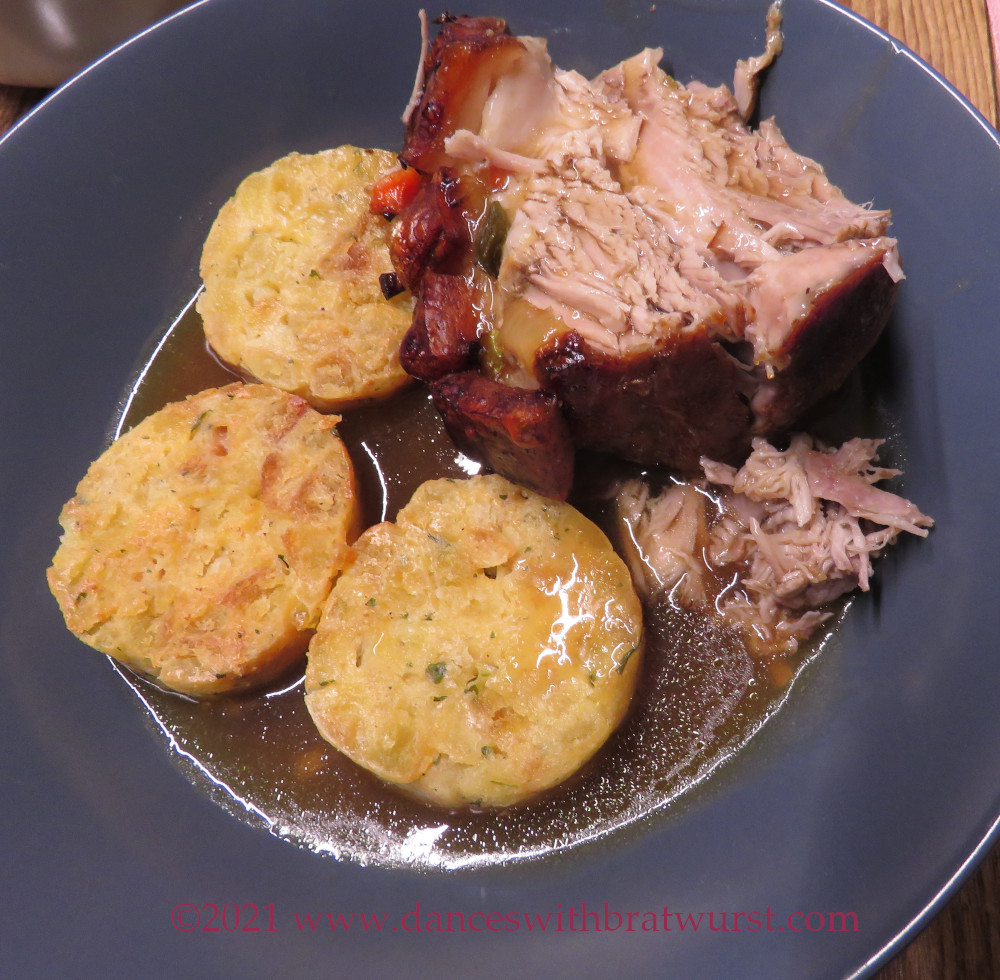
March 2021
Knödel is usually translated as “dumpling” but they don’t resemble any American or Asian dumplings that I’m familiar with; they’re just balls of bread or potato, mixed with other stuff for flavor and stability, then boiled. They can be served with sauce or melted butter.
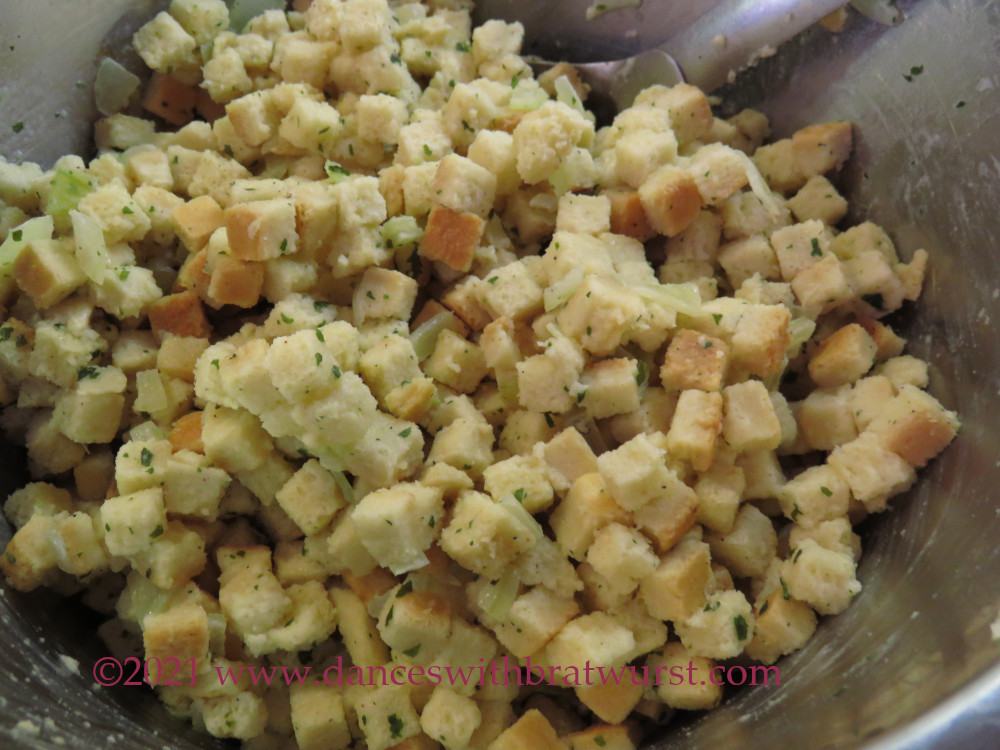
March 2021
Since we didn’t happen to have half a pound of stale bread lying around, we bought a bag of bread already cubed up for Knödel. It’s mixed with egg, milk, sautéed diced onion, salt, pepper, and parsley, then allowed to rest for an hour.
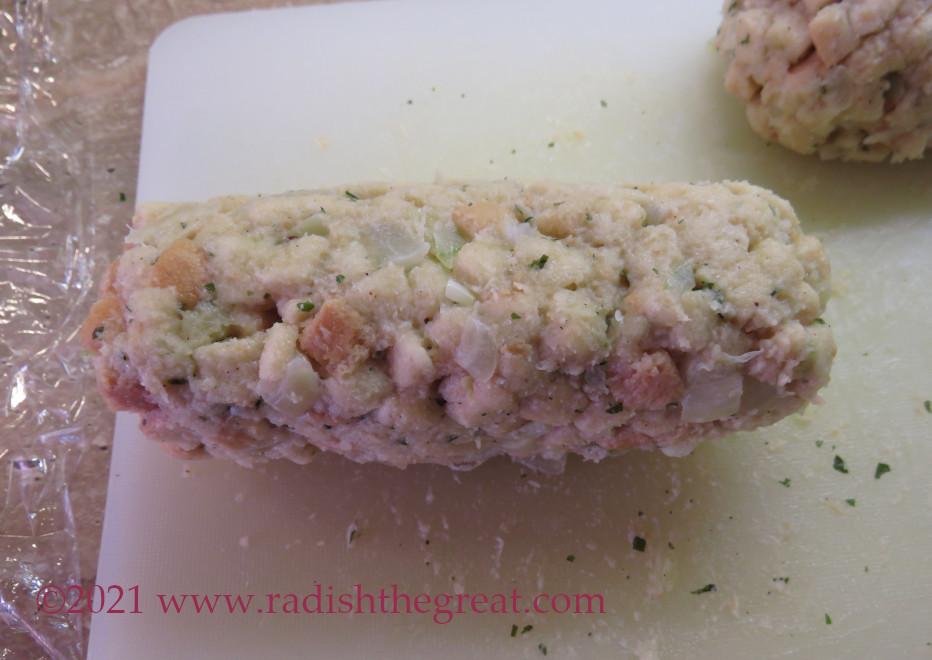
March 2021
My favorite way to make these at home is called Serviettenknödel; instead of a ball, the dough is pressed into rolls (like icebox cookies) and then wrapped. A Serviette is a napkin, but I am wrapping these in heat-proof plastic wrap before boiling them. Tie up the ends so no water gets in and they won’t fall apart.
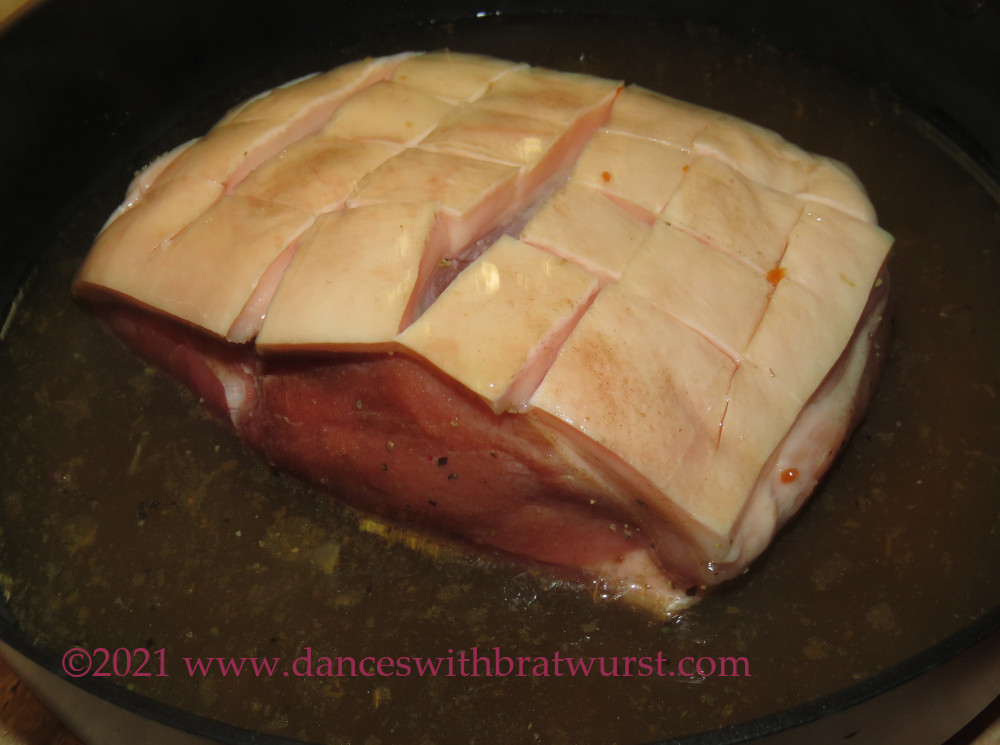
March 2021
The Krustenbraten comes from the Oberschale of the swine, or the bit between the leg and the ham (#18 on this pork map). The outer layer of fat and the Schwarte (rind) are left on. You’re supposed to score the Schwarte but not cut all the way to the meat, but this is my first time. All sides of the roast are rubbed with a mixture of salt, pepper, and ground caraway (my Kümmel!), then boiling beef broth is poured over the top. It goes uncovered into a preheated oven to await the vegetables for the sauce:
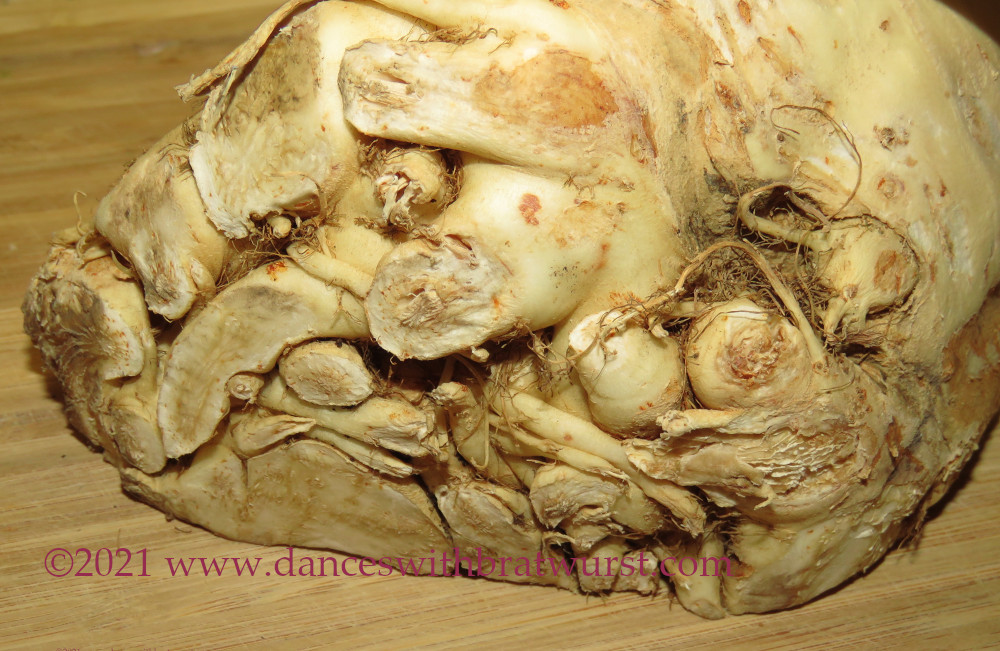
March 2021
Meet the Knollensellerie. In the US he’s known as celeriac and mostly grown for commercial broths and soups. You can also eat him raw in a salad, pureed, or mashed. He’s the white cubes in the next photo, alongside carrots and leeks (there is also some white onion that didn’t make to the portrait session on time).
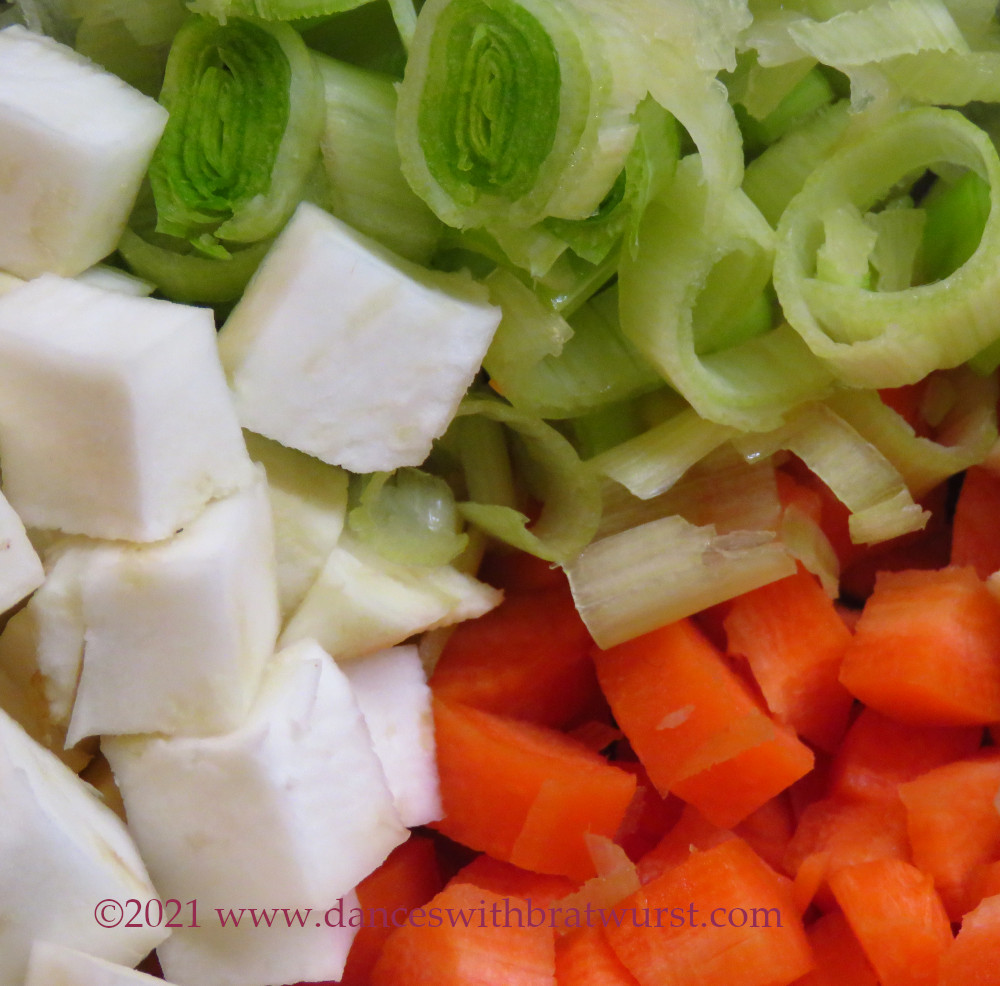
March 2021
And it all goes in the pan with more boiling beef broth for a couple more hours. Baste with the pan liquid occasionally. Try not to get vegetables stuck in your Schwarte.
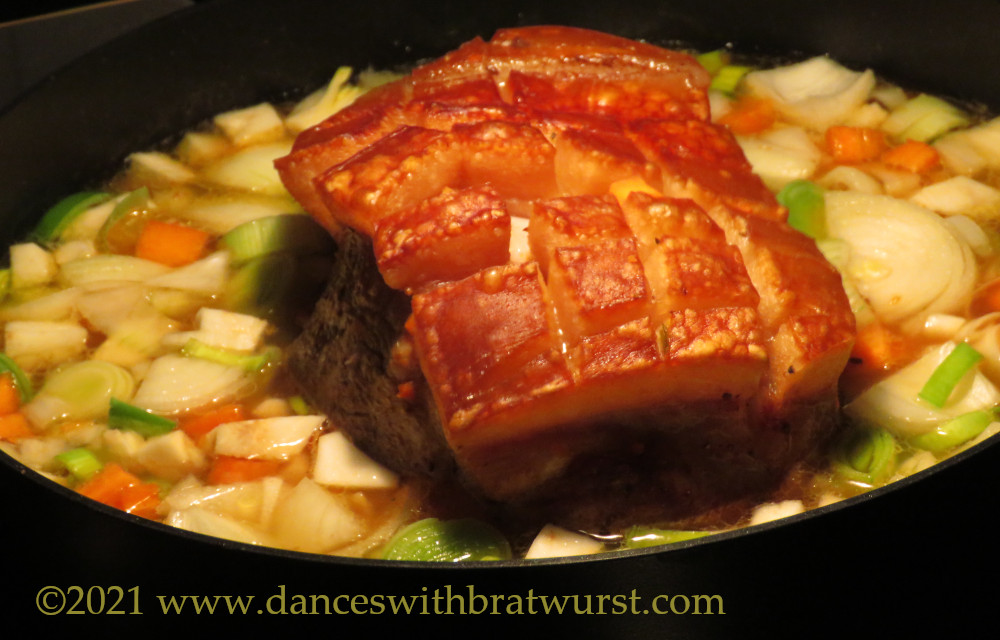
March 2021

March 2021
While all this is going on, simmer the Serviettenknödel in lightly boiling water for about forty minutes.
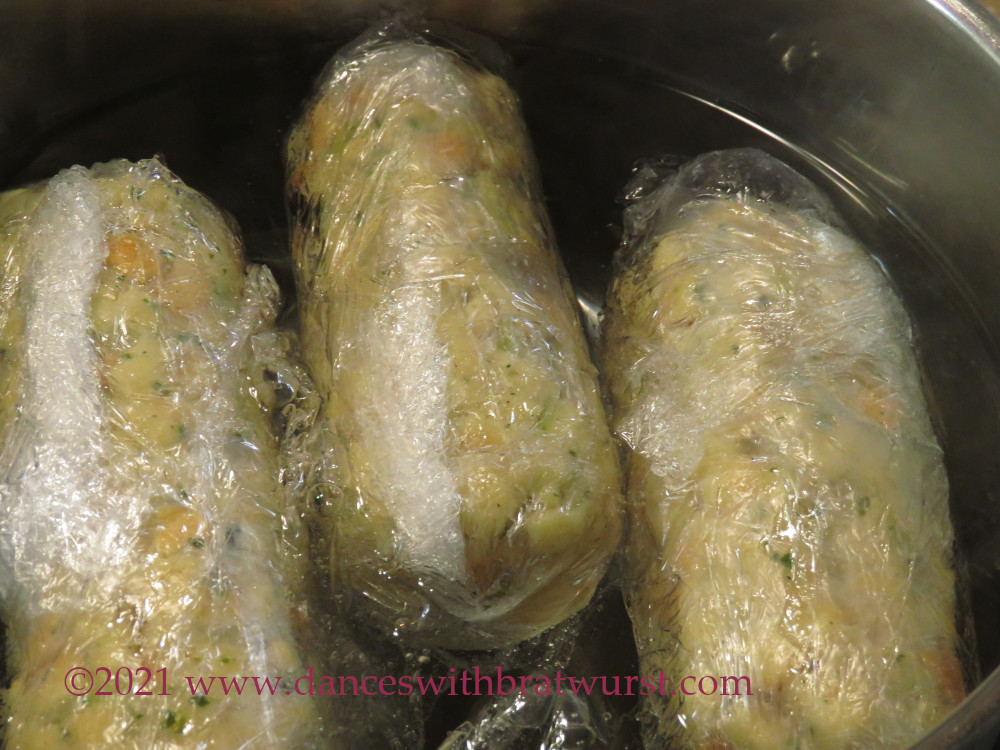
March 2021
When they are ready they should be firm; slice the logs and fry them lightly in butter (you can skip this step, but you don’t want to).
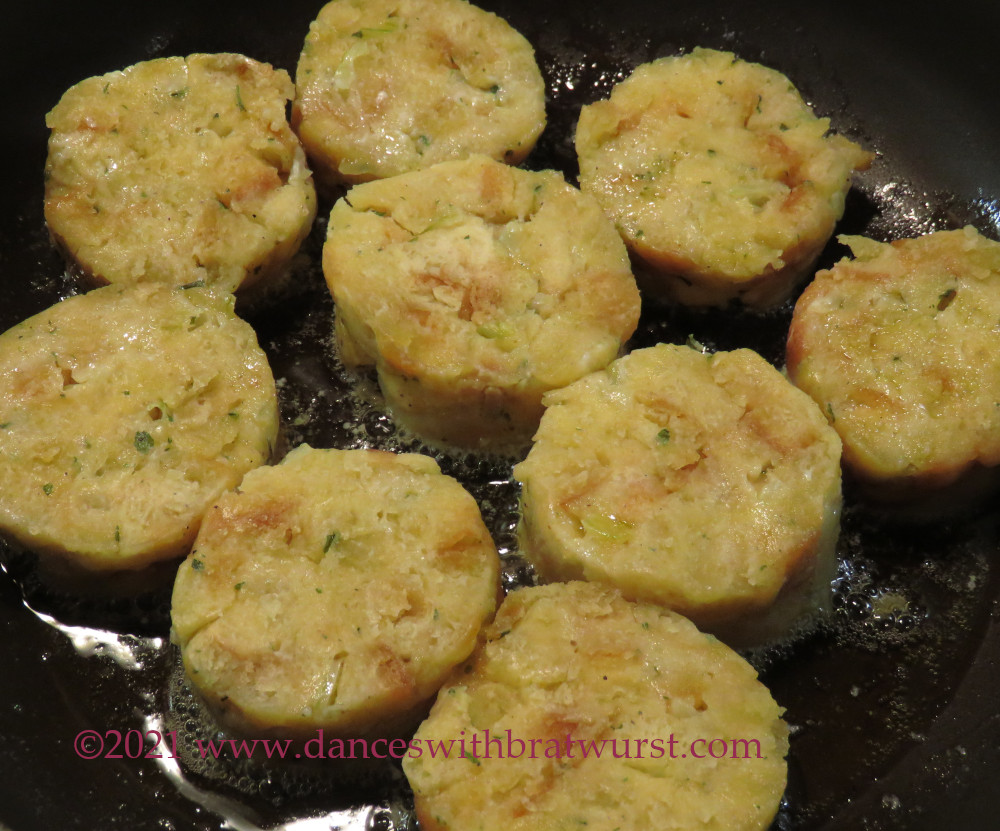
March 2021
During the last half-hour of roasting, pour a bottle of dark lager beer into the pan and crank up the broil function on the oven so the Schwarte gets nice and crispy.
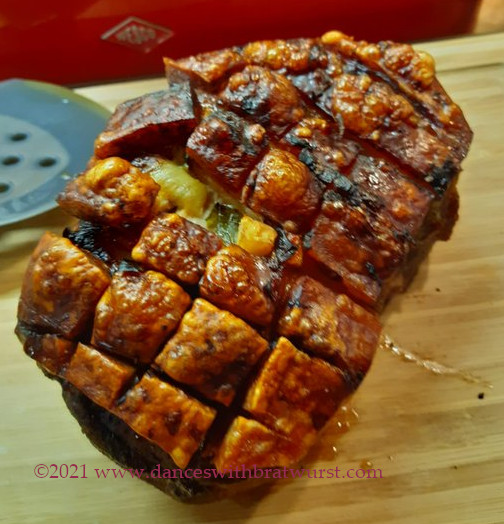
March 2021
To finish the sauce, drain out the vegetables, and if you like you can thicken it with corn starch. I don’t have a picture of this step because I was too hungry to mess with the camera. 🙂
And it’s just that easy. Guten Appetite!
